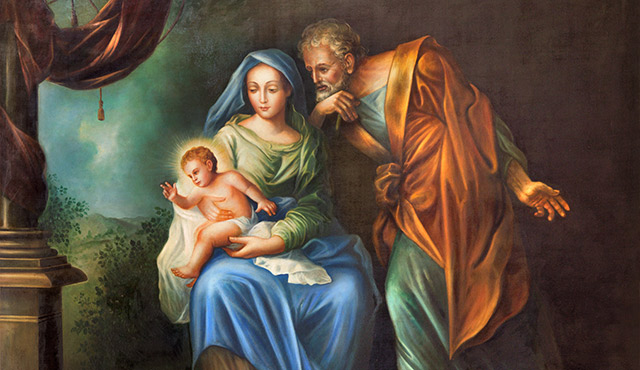“But as he considered these things, behold, an angel of the Lord appeared to him in a dream, saying, ‘Joseph, son of David, do not fear to take Mary as your wife, for that which is conceived in her is from the Holy Spirit.’” (Matthew 1:20)
Joseph’s dream might be considered the most famous of all. Yet, while God sent Joseph two more dreams, he is certainly not the only Biblical figure to encounter the supernatural in his sleep.
“In the scriptures, God used dreams and visions to communicate to his people and reveal the Father’s will and plan of love for all of humanity,” says Dr. Anthony Lilles, academic dean at St. John’s Seminary in Camarillo, Calif. Dreams occur during sleep and visions are encounters in the mind while awake.
In the Old Testament, God’s covenant with Abraham was revealed in a vision, reminding Abraham that he would have a son and be the father of many nations. Also in the Old Testament, Joseph interpreted his dreams while a slave in Egypt, and in the Book of Daniel, he had many dreams and visions revealing the future of Israel. The Book of Revelation is entirely a vision recorded by John.
But what does the Church today teach about dreams and visions?
Public vs. private revelation
Catholic theology views revelations in dreams and visions in two distinct ways: public revelation and private revelation. The church teaches that all public revelation from the scriptures and tradition is binding to Christians throughout all the ages. The Catholic Church also states that all public revelation ended after the death of the last Apostle, John, and is closed until the Second Coming of Christ.
“The Christian economy, therefore, since it is the new and definitive Covenant, will never pass away; and no new public revelation is to be expected before the glorious manifestation of our Lord Jesus Christ.” (Catechism of the Catholic Church, 66).
Private revelation, the church teaches, continues to this day, but is only binding to the person who experienced it. It must also be consistent with what has already been revealed in scripture, tradition and the teaching body of the church, says Fr. Troy Schneider, STL, parochial vicar at Holy Family Cathedral in Orange. “There is only one truth, and no new truth,” says Fr. Schneider. “Any private revelation should draw you closer to God.”
“Throughout the ages, there have been so-called “private” revelations, some of which have been recognized by the authority of the Church. They do not belong, however, to the deposit of faith. It is not their role to improve or complete Christ’s definitive revelation but to help live more fully by it in a certain period of history. (Catechism of the Catholic Church, 67).
“Private revelations do not add anything to the content of what God has already revealed through scripture and tradition,” says Dr. Lilles. “They are directed to how one lives out God’s plan here and now, in your daily life.”
But there are instances of private revelation that serve to build up the church, such as the visions of St. Teresa of Calcutta, or Mother Teresa, whose private revelations from God to serve the poorest of the poor “became a beautiful message to the whole world,” says Dr. Lilles.
But the church also warns of dreams and visions that might not come from God. St. John of the Cross writes that it is almost impossible to interpret these dreams and visions on your own, and that one should speak with a spiritual director or confessor to help in discernment, says Dr. Lilles.
“In private revelation, whenever you respond to God’s will in your life, the Father does something beautiful for you personally, and sometimes for the whole world.”
Apparitions
Unlike dreams and visions, apparitions are a physical manifestation of the spiritual object, the actual appearance of something. While it might be considered an appearance of an apparition, The Annunciation, when the angel Gabriel appeared before the Virgin Mary to announce she was chosen to be the mother of Christ, is on a wholly different plane, says Fr. Schneider.
Today, before the Catholic Church deems a reported apparition as supernatural, the Congregation for the Doctrine of the Faith at the Vatican institutes a formal process and investigation to determine the validity of an apparition. Two of the most famous Marian apparitions, considered private revelations, affirmed by the Catholic Church are:
Our Lady of Lourdes—The Blessed Mother appeared 18 times before 14-year-old shepherd girl, Bernadette Soubirous in Lourdes, France in 1858.
Our Lady of Fatima—The three shepherd children at Cova da Iria, in Fátima, Portugal, in 1917 reported seeing the Virgin Mary. The Church declared it valid in 1930.


